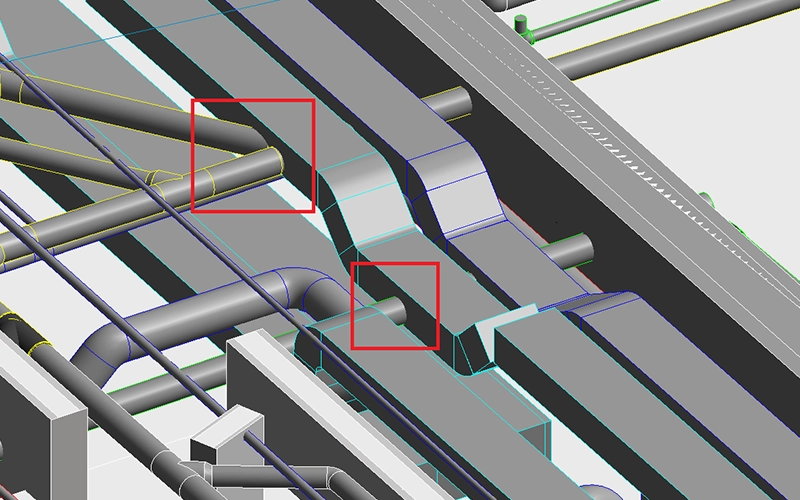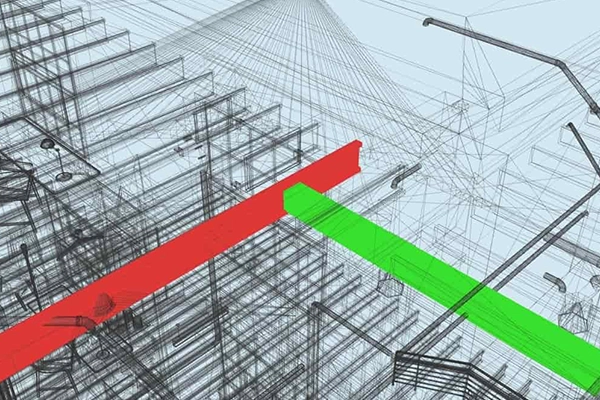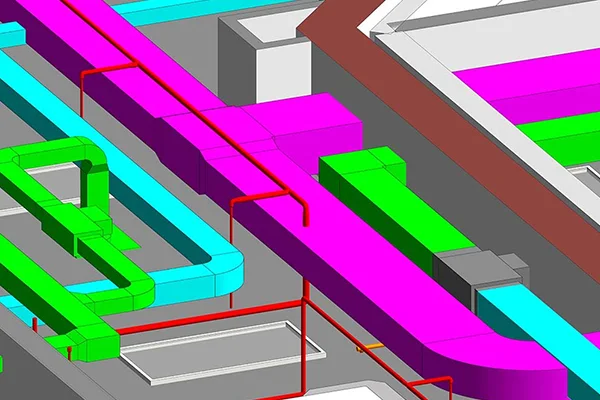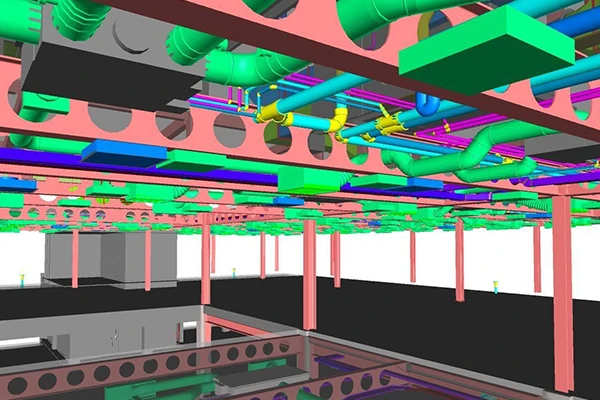
BIM Clash Detection: A Guide to Identifying and Resolving Conflicts in Your Project
We are sure that most of you know what Building Information Modeling (BIM) is and how it enables architects, designers, modelers, contractors and other stakeholders to have full control over what they have designed and then efficiently have their projects executed in a way that will benefit all of them.
However, if you have just started to get familiarized with what BIM is, then allow us to quickly share its brief introduction and then we will talk about how you can understand the process of clash detection in BIM and then move towards resolving the conflicts as you progress into the project.
In simple and easy to understand words; Building Information Modeling (BIM) is a process that allows its users to create and manage the digital representations which showcase the physical and functional characteristics of a building, etc.
There are various advantages of using BIM but the one that tops the list is that when you incorporate it into your projects, you can make sure that you are aware of everything that is taking place throughout the entire lifecycle of the project; from the design and construction to making it functional and then its maintenance. And now, allow us to share how, with BIM, you can identify and resolve clashes within a design.
What is BIM Clash Detection?
BIM clash detection refers to efficiently identifying and resolving clashes in a building’s elements within a 3D model. Clashes usually occur when different elements of a building such as architectural features, plumbing and electrical elements, HVAC systems, mechanical and other crucial structural components either overlap or interfere with other building elements.
Types of BIM Clash Detection
In this part of our blog, we would like to discuss in detail the types of clashes that Building Information Modeling (BIM) can detect. We are sure that by going through the types of BIM clash detection, you will be able to educate yourselves as well as guide your team members in a better way.
1. Hard Clash

As evident from the name, the ‘hard clash’ occurs when two or more physical elements of an infrastructure or a building clash with each other and it is not possible for them to coexist in the same environment in the real world. We would also like to share a couple of examples of hard clashes for clarity such as; plumbing pipes intersecting with structural beams, electrical conduit clashing with other physical elements of the building, Heating, Ventilation and Air Conditioning (HVAC) ducts intersecting or overlapping with walls or even other elements, etc.
In situations where the geometry of two or more elements is either intersecting or overlapping with each other, it becomes extremely important for the designers to coordinate with the rest of the stakeholders and share their concerns so that they can all decide to modify the designs and then move in the forward direction.
2. Soft Clash
The term ‘soft clash’ refers to the intersection or overlapping of two or more elements that might not impact the physical appearance of a built environment but that does not mean that the soft clashes can be left as they are. In fact, they need to be resolved with proper planning and modification in order to achieve the best possible results.
Although, the soft clashes definitely require revisiting the designs, etc., the best thing about them is that they can be resolved through discussions, sequencing and adjusting of the non-physical elements. A couple of examples to better detect and understand the soft clashes are clearance issues, spatial proximity or when two or more elements are not allowed geometric tolerances. As a result, you might see people facing difficulties when getting their air conditioners serviced. When soft clashes are resolved strategically, you will see great things happening all at once.
3. Workflow or 4D Clash
The last type of clash in the context of Building Information Modeling (BIM) is a workflow or 4D clash. This term refers to a clash when a conflict takes place not just in a 3D environment but also in a 4D or fourth dimension. Such types of clashes can occur between equipment that is being used to carry out the project in various disciplines, with scheduling of contractors, and the delivery of the required material.
In addition to that, workflow or 4D clash also refers to a delay in the general workflow of the project. And not to forget, these clashes can also impact the overall productivity of a project so, the resolution of such clashes is not only crucial but must be taken care of at the earliest to avoid conflicts among the team members.
We do not mean to scare you but we would like to be clear when we say that such clashes can disrupt the overall project which can eventually impact the timelines. And even more so, the stakeholders can face issues related to the construction process also including loss of time, money as well as momentum. If you happen to identify any clashes within your designs, etc. then you must not worry as our experts at DDC Solutions are fully equipped and ever ready to help you with Clash Detection BIM.
Challenges Related to Clash Detection

Before we formally discuss the best practices for effective BIM clash detection and the advantages of incorporating that into the system, we would like to mention a few challenges related to clash detection as well that you must keep in mind. For example; it is important that your 3D models are accurate otherwise you might end up with unreliable clash detection. In addition to that, the results must also be reviewed and validated by responsible teams to minimise rework and ensure solid results after detecting clashes so that the concerned stakeholders and teams can resolve the challenges properly.
Here, we would also like to mention that by allowing us to take care of your construction projects, you can easily move towards the resolution of the conflicts that we have mentioned above. But keep in mind that you also need to ensure that all the challenges are addressed promptly by putting forward your concerns and discussing them with the decision-makers so that the project can be completed without having to compromise on deadlines and efficiency.
Best Practices for Effective BIM Clash Detection
In this part of our blog, we will discuss how our team of experts at DDC Solutions follows and applies the best and most effective practices for BIM Clash Detection.
1. Preparing and Combining 3D Models with DDC
To get started, we prepare 3D models of all the building components and systems that are necessary for your construction projects. These 3D models allow us to help you view, revise and also visualise all the crucial aspects and elements of an infrastructure or building including the architectural, structural, electrical, mechanical elements, etc.
Later on, we combine the 3D models into one model that is not only easy to analyses and evaluate but it is also well coordinated. The BIM Coordination helps the project team members analyses all the models from multiple disciplines without any difficulty.
2. Efficient Clash Detection at DDC

Once the clash detection rules have been chalked out and specified for a certain project, the process of clash detection takes place by involving all the stakeholders. This practice allows them to make well-informed choices by collaborating within the same system. Here, we would also like to mention that the clash detection rules can vary considering where the construction is taking place and as per the project specifications.
With our trained team of experts at DDC and efficient software tool(s), we perform clash detection on the coordinated 3D models. BIM efficiently analyses the models and then identifies the clashes (if any) as per the rules that have been set by us.
3. Reviewing the Clashes at DDC
Moving on, the next step for us is to review the clash reports which are generated by one of the software that has been incorporated into the system as these reports not only provide us with thorough information about the clashes themselves but also help us determine their location as well as the intensity. And once we have received the detailed information; we can work with you to proficiently priorities the clashes and resolve them as we go.
4. DDC Makes Clash Resolution Easy
Our teams at DDC are always ready to help you resolve conflicts through effective project management and collaboration. As you must be aware BIM offers coordination with all the project team members where they can analyses, evaluate and discuss the models and changes in real-time, we are happy to share with you that with DDC Solutions, you will enjoy top-notch clash resolution in no time – even if it requires modifications in the designs, rerouting or eliminating any system or element from the designs, etc.
5. Regular Monitoring at DDC
All our teams work on your projects like their own which means that we don’t pause the clash detection process after we have conducted it for the first time, but, in fact, regular monitoring is performed at several stages throughout the entire lifecycle of your project and a record is maintained so that if at any point in time, someone wants to track the changes, they can easily do so while also staying updated with the current development.
Benefits of BIM Clash Detection
BIM clash detection offers a multitude of benefits, including:

- Improved communication and collaboration: By bringing everyone together to review clashes, BIM clash detection fosters better communication and collaboration between project stakeholders.
- Reduced costs and schedule delays: Identifying and resolving clashes early on can prevent costly rework and project delays later in the construction process.
- Enhanced safety: By eliminating potential safety hazards caused by clashes, BIM clash detection helps to create a safer work environment for everyone involved.
- Improved quality: By ensuring that all project elements fit together seamlessly, BIM clash detection helps to improve the overall quality of the finished product.
Also Explore: Scan to BIM Best Practices
Conclusion
Before we conclude our blog today, we would also like to mention here that there are many different advantages of BIM Clash Detection such as you can save your precious time, money as well as energy by preventing errors in your designs even before the construction process is initiated. It would be safe to say that these practices contribute towards building sustainable structures around us by keeping the carbon footprint in check.
In addition, you and your team members can enhance project efficiency as the identification of clashes minimizes physical rework. Effective clash detection also allows you to provide the workers with a safe environment as you will be able to eliminate all potential hazards that might harm them in one way or another. All thanks to BIM Clash Detection, all of that can be easily done while you are in the design stage.
If you are working on any construction projects at the moment or if you are unable to properly detect clashes within your designs, etc., then don’t waste any more time and contact us today. And we will be happy to take it from there!

13 Responses